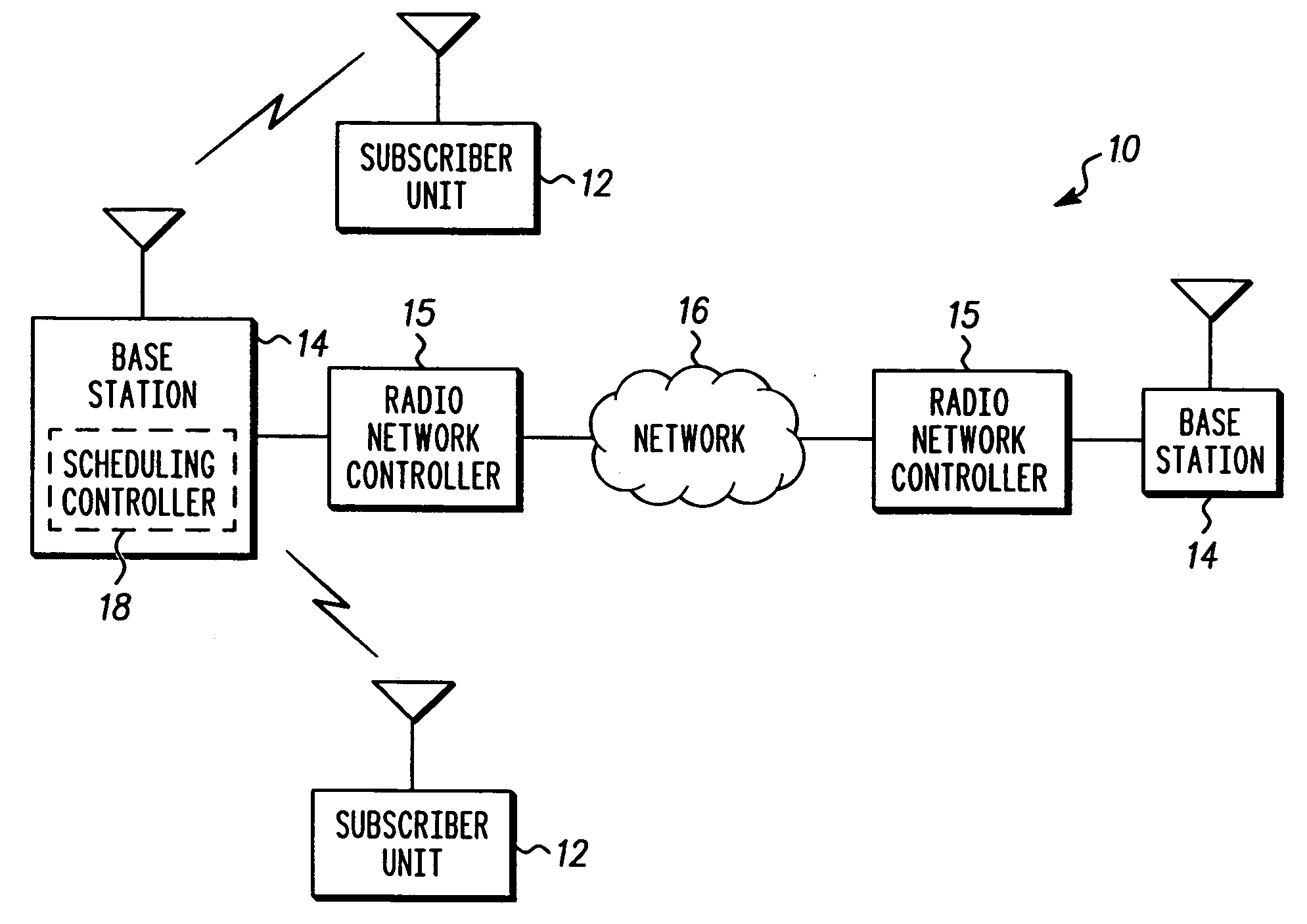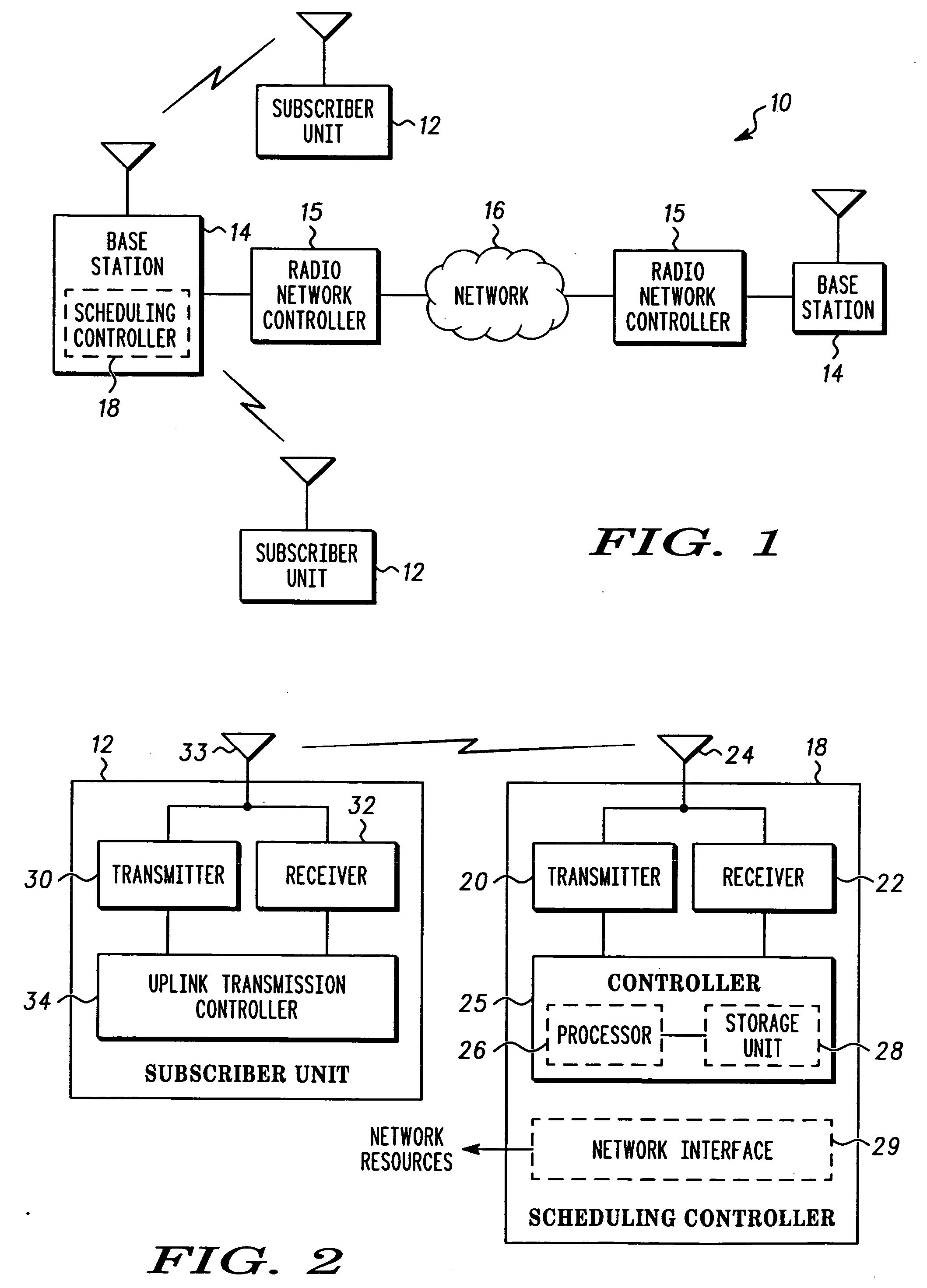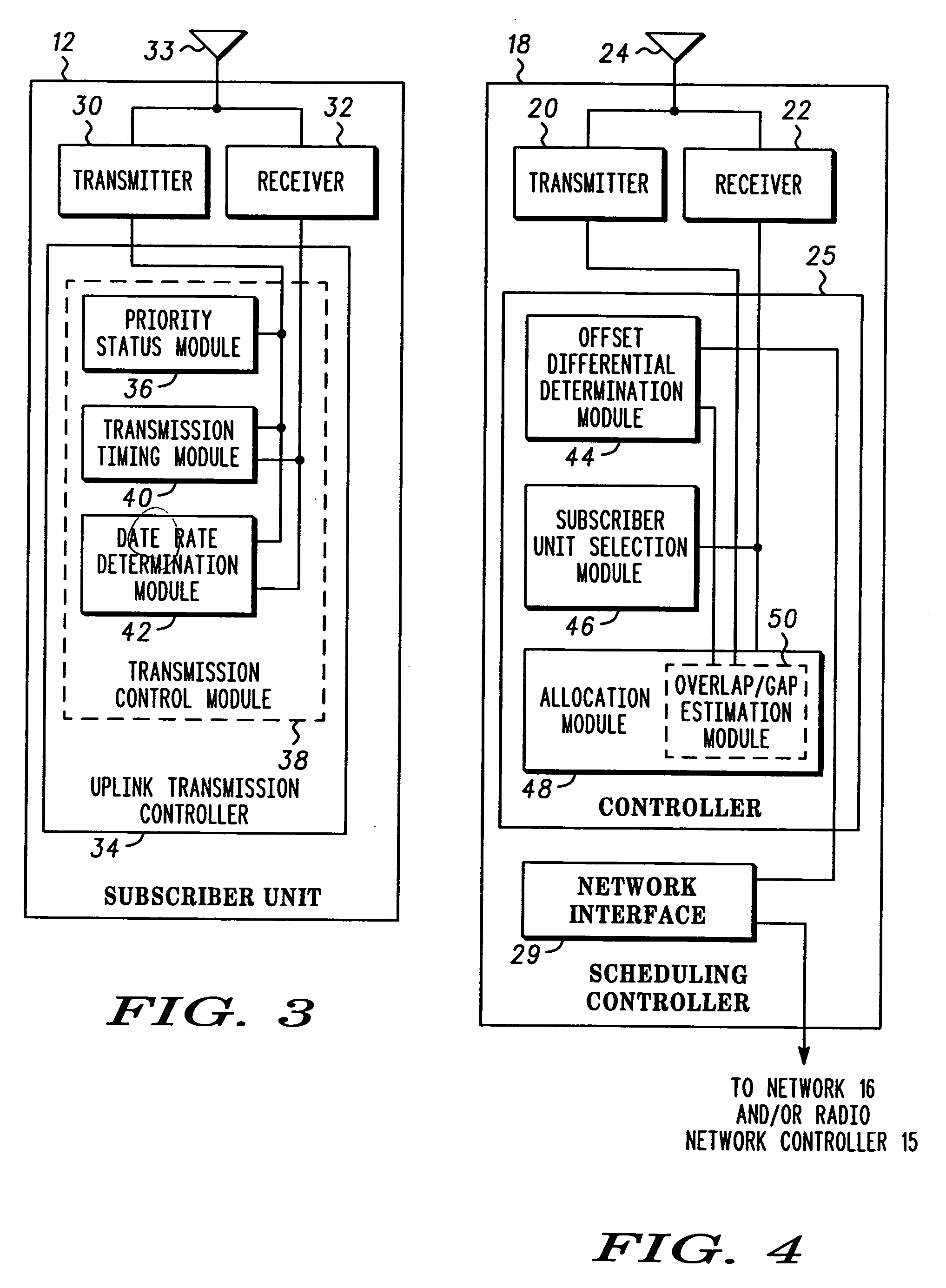Method and apparatus for scheduling asynchronous transmissions
- Summary
- Abstract
- Description
- Claims
- Application Information
AI Technical Summary
Benefits of technology
Problems solved by technology
Method used
Image
Examples
Embodiment Construction
)
[0025] While the present invention is susceptible of embodiment in various forms, there is shown in the drawings and will hereinafter be described presently preferred embodiments with the understanding that the present disclosure is to be considered an exemplification of the invention and is not intended to limit the invention to the specific embodiments illustrated.
[0026]FIG. 1 illustrates at least one example of an asynchronous wireless communication network 10 in which it would be suitable to incorporate the present invention. Examples of asynchronous wireless communication networks include networks, which conform to several well known standards including Global System for Mobile Communications (GSM) and Wide band CDMA (WCDMA).
[0027] The communication network 10 illustrates a pair of subscriber units 12, which communicate with at least one of a pair of base stations 14. In the same or alternative embodiments, a subscriber unit can be sometimes alternatively referred to as User...
PUM
 Login to View More
Login to View More Abstract
Description
Claims
Application Information
 Login to View More
Login to View More - R&D
- Intellectual Property
- Life Sciences
- Materials
- Tech Scout
- Unparalleled Data Quality
- Higher Quality Content
- 60% Fewer Hallucinations
Browse by: Latest US Patents, China's latest patents, Technical Efficacy Thesaurus, Application Domain, Technology Topic, Popular Technical Reports.
© 2025 PatSnap. All rights reserved.Legal|Privacy policy|Modern Slavery Act Transparency Statement|Sitemap|About US| Contact US: help@patsnap.com



